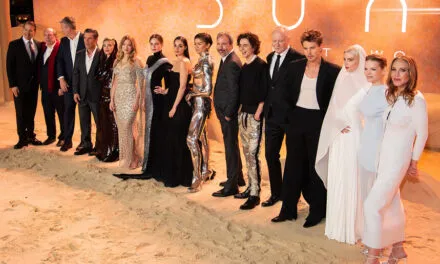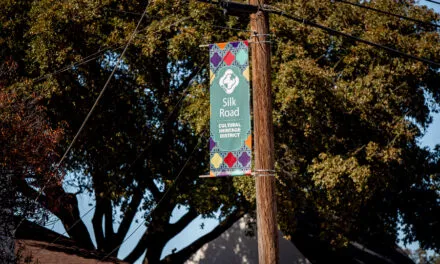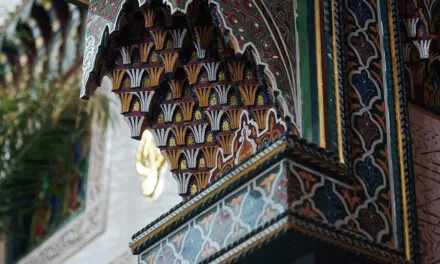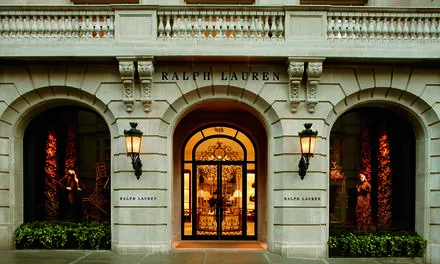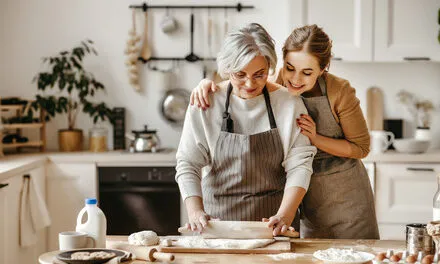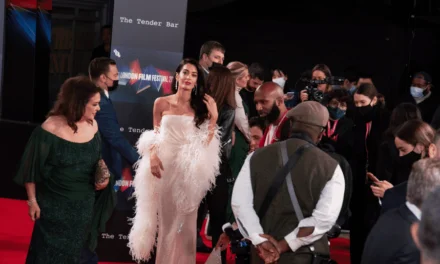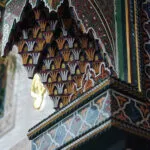Credit: Hassan Boutabaa
Archways. Intricate geometric patterns. Rich textiles. The contemporary interior design world is undergoing a renaissance fueled by Arabic and Middle Eastern influences. More than mere borrowing or superficial trends, designers are engaging in a sophisticated integration of venerable design principles with contemporary style.
The result? Spaces that feel both timeless and profoundly modern.
“Arabic design is experiencing a revival because people are craving depth,” says Hassan Boutabaa, founder of Boutabaa Crafts—a family-run Moroccan furniture brand based in Marrakech. With the rise of slow living, mindful interiors are gaining in popularity, he adds. “The warmth of carved wood, the symbolism in geometric pattern, and the use of arches and sacred motifs feel like aesthetic and spiritual nourishment.”
The Foundation Behind Arabic Design Philosophy

Historic Carved Door (Moulay Idriss Mosque, Fes). Credit: Hassan Boutabaa
While Arabic design may appear seamless, its approach is underpinned by a meticulous, mathematical foundation that relies on geometric precision. Intricate patterns are prevalent in delicately carved mashrabiya (latticework) and floor designs, most often appearing in tilework, woodwork, and textiles. These elements collectively impart a sense of harmony, order, and unity.
Four basic shapes—squares, stars, circles, and polygons—are the building blocks. Combined and repeated, they form hypnotic designs that have captivated the eye for centuries. Arabic-inspired mosaic design also features these geometric patterns, as well as complex arabesques and floral motifs.
Archways have become especially popular: cabinets with arched panels, arched mirrors, dome pendants, and even barrel chairs exemplify the trend. Arches can create seamless visual flow between spaces while adding height and grandeur. They serve as natural focal points that draw the eye upward, celebrating space and light.
Horseshoe arches are a signature in Moroccan design, characterized by large, rounded arches atop a straighter, narrower doorway. Commonly found in mosques, often framing the mihrab (prayer niche)—such as the Koutoubia Mosque in Marrakech—they are now adapted in modern homes for kitchen pass-throughs and bedroom alcoves.
Arabic-influenced textiles impart warmth and a tactile richness to spaces. Intricate embroidery, bold patterns, and luxurious fabrics create layers of visual and physical comfort. Key examples include tiraz textiles, damask, lampas, velvet, and ikat. These historically rich fabrics—originally produced in public and royal factories across the Islamic world—feature calligraphic decorations, stylized floral and geometric patterns, and vibrant colors.
Known for its fine weave, muslin is also frequently used, alongside Al-Attabi silk, which is marked by an irregular wavy finish and used in Spain. The silk, also known as tabby silk, originated in the Al-‘Attābīya district of Baghdad.
Leading Designers Embracing Arabic Influence

White & Black Mashrabiya Nightstand (AI-Generated). Credit: Hassan Boutabaa
In Riyadh, Princess Alanoud Al Saud reinterprets Saudi heritage via her A Interiors studio, creating contemporary spaces that blend traditional textiles and mashrabiya details with modern geometric forms. A standout in her portfolio is a minimalist, neutral-toned Riyadh villa that showcases exquisite stone and wood craftsmanship—a beautiful marriage of marble, wood, and granite. Another project, the Ammariyah Farm Villa, located at the edge of the desert, utilizes tones derived from nature, along with white walls and floors, to create an airy, grand space. Hanging lanterns, mashrabiyas, and basket lighting warm the crisp look.
In the Doha Design District, Shaikha Al Sulaiti mentors emerging Qatari talent while maintaining her own practice. Her Mondrian-inspired tables, showcased at Milan Design Week 2024, reinterpret traditional stained glass motifs, while rug designs draw from historic Qatari plasterwork. Her Wagaaj table series is created from composite acrylic that riffs on Arabic hues and stained glass windows found in modern Qatar homes. Recycled fabric woven into the surface of the tables creates intriguing shadows when struck by light.
The Emirati designer Aljoud Lootah is celebrating her studio’s tenth anniversary. Her work largely merges traditional craftsmanship with minimalist aesthetics. A good example is her Petrol Boucle Takya Stool, which resembles four stacked cushions. It’s reminiscent of a memory the designer had as a girl. “It was very common in traditional majlises and low seating areas to have rectangular cushions that were placed against the wall for people to lean on,” she writes. “Children would always stack them up on top of each other to build walls and create play areas, castles, and forts of our imagination.”
Nada Debs, a respected Beirut-based designer, preserves traditional craftsmanship through modern applications, from marquetry to weaving. From her Beirut studio, Debs designs furniture and accepts commissions to create fashion, art, crafts, and interiors. Her mod carpets are especially popular, including the “You Spin Me Round” design, consisting of a rectangle edged with a semi-circular shape. Using yellow and green hues and abstract shapes, the piece is a collaboration with the Fatima Bint Mohammed Initiative, which supports female carpet weavers in Afghanistan.
Commercial and Hospitality Applications

Arches & Geometry in Fes (Riad Al Salam). Credit: Hassan Boutabaa
The commercial sector has been particularly receptive to Arabic-influenced design. Increasingly, hotels, restaurants, and retail spaces incorporate these elements to lend a warm, inviting feel. Yoga and meditation centers also favor the look for its calming properties.
A notable name in the industry: Dubai-based Maliha Nishat. As Director of Interior Design & Global Design EMEA at Marriott International, Nishat has put her distinctive mark on hotels worldwide. Her spaces feature clean, uncluttered lines and soft, neutral palettes subtly borrowed from nature—like stone tones, gentle textures, and organic motifs. The result is a comforting sense of welcoming. Her interiors are also narrative-driven, always feeling locally resonant but globally informed.
Pallavi Dean, founder of Roar Design, brings a multicultural sensibility to her designs. Born in India, raised in Dubai, and working in London, Dean’s portfolio includes high-profile hospitality, commercial, and residential projects located across the Middle East, Africa, and the UK. Dean’s work is defined by its narrative-driven approach, where every space tells a story. A notable property: the Armed Forces Officers Club & Hotel in Abu Dhabi. Stairways and platforms seem to cross a granite-topped desert banked by trees in one part of the design. In another, curved, wooded shapes with lattice-type webs seem to swoop from the ceiling.
Residential Applications and Home Integration

Muqarnas Coffee Table in Living Room. Credit: Hassan Boutabaa
His suggestions:
- Add a hand-carved cedar side table with traditional patterns.
- Use a painted nightstand as a pop of warm artistry next to a neutral bed.
- Hang a carved wooden panel or mirror frame to ground a quiet corner.
- Introduce natural incense holders or carved boxes to make rituals part of your décor.
“Each piece carries its own story, soul, and craftsmanship—connecting the home to something deeper,” Boutabaa says.

